Yucca Cane Plant is a hardy, easy care indoor plant or small tree with strong architectural lines. Sword shaped leaves extend from long woody canes in tufts of leaves extending from the long bare canes. This is an interesting green living companion with lots of eye appeal.
Yucca grows to around 15 feet tall indoors. It has minimal foliage so it is a perfect indoor statement plant. Once it is grown, the long yucca canes elevate the spiky foliage up out of the way of passing foot traffic.
Set the Yucca cane out of the walk way in a high entry way or high vaulted room with diffused strong bright light. Indirect Southern and western exposures work well for this sun loving plant.
Outdoors this soft tipped Yucca plant grows up to 30 feet high, often flowers and even grows fruits.
How does the Yucca Plant grow? All the leaves of the Yucca grow from growth points at the top of the cane and form tufts of leaves. The older leaves eventually age out and die. The old leaves droop under the leaf clump and form a skirted look. New leaves emerge from the top of the leaf tufts and the plant gains another inch and on it goes.
Yuccas also send out side shoots from the roots called pups. If you leave the new pups alone they will add new canes to your yucca pot.
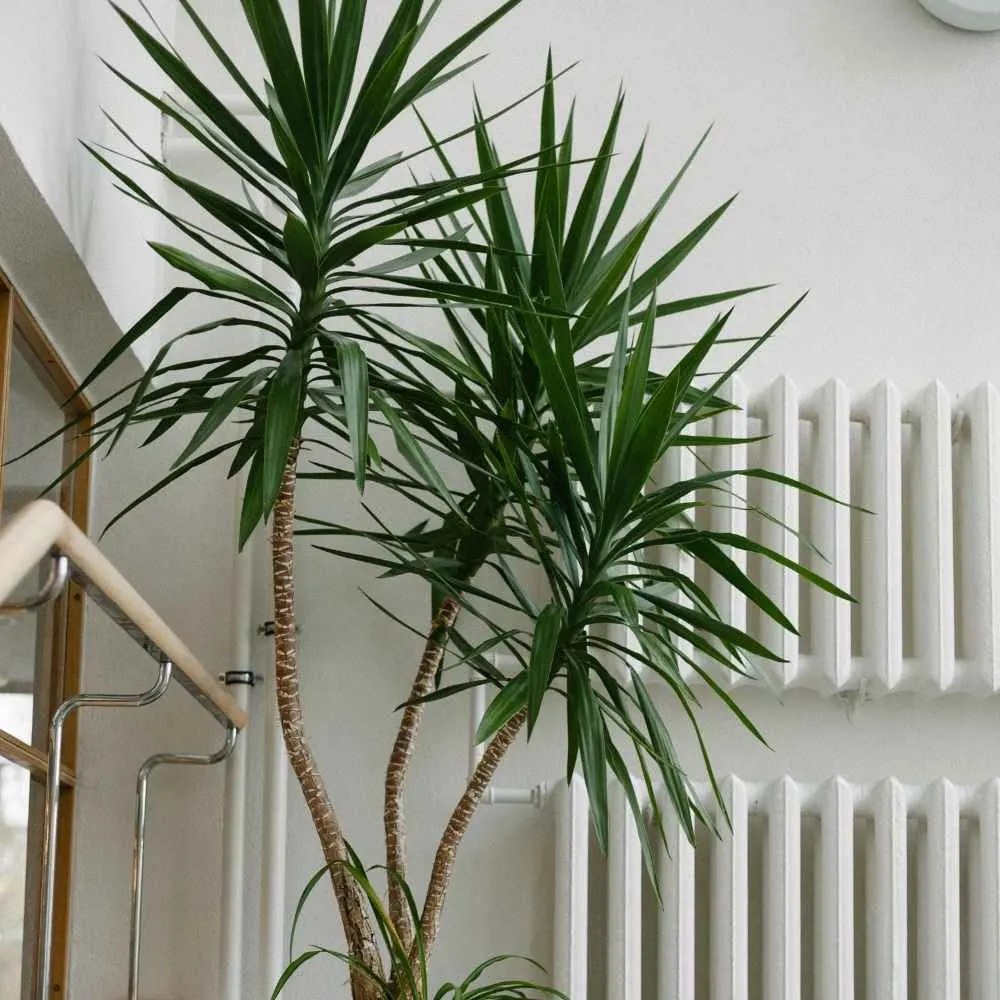
Is Yucca a Good Indoor Plant?
Yucca is a very attractive, easy care indoor plant. The yucca plant has similar care needs to its relative, the Aloe plant. This durable plant can take extreme temperature shifts. So large entry ways and other drafty areas don’t bother the Yucca.
Yucca guatemalensis (otherwise known as Yucca elephantipes) is a spineless yucca plant. It is the best choice for a yucca indoor plant. This yucca cane plant has long spiky leaves that grow in tufts from long strong stems. But the leaves are less sharp than the (aloifolia)Spanish bayonet Yucca.
It will take several years to reach full maturity. It may not need repotting for up to five years.
Where should You Place a Yucca plant indoors? Place yucca plants anywhere it fits and you like it. Yucca does well in entries, near brightly lit window walls, or even a less well lit nook. As it grows, look for spots that are complimented by its starkly strong architectural shapes and brightly green leaf tufts.
Care Tips For Growing Yucca Cane Indoors:
Here’s a few info facts and tips tabled below for ‘at a glance’ look at yucca and its indoor care needs. Go also to the table on growing yucca outdoors and for a printable care guide scroll to the bottom of the post.
Like most succulents and desert natives, Yucca is a dry loving plant that tolerates neglect well. It makes a wonderful addition to homes, offices and other low maintenance indoor commercial plantings.
| Familiar Names: | Yucca cane, yucca plant, spineless yucca, soft tip yucca |
| Scientific Name: | Yucca elephantipes |
| Plant Family: | Agavaceae-Native to Mexico and Southwestern United states |
| Care Difficulty: | Easy. Yucca survives neglect well and is fairly durable. Don’t Overwater it! |
| Temperature: | 65 to 85 degrees F. . Yucca can tolerate extreme fluctuations in temperature , even down to freezing. Makes it a great patio plant. Set it in entry way or other drafty areas without worry. |
| Watering: | Drought resistant plant. Water when soil is dry. Check it weekly. Yucca needs less water in low light. Overwatering is the Achilles heel of Yucca plants. |
| Soil: | cactus, succulent soil or other light well draining soil mix. |
| Lighting: | Yucca prefers bright indirect light. It will tolerate moderate or even low light, similar to a snake plant, but the plant may have a spindly look and grow weaker, thinner canes and leaves. |
| Growth: | Moderate grower to 15 feet indoors |
| Propagation: | Offsets (or pups) grow from the base of the cane. These can be cut off with some of the cane roots attached, allowed to dry to heal the wound and planted in pots to grow new yucca canes. Yuccas can also grow from division of the rhizome or seed. |
Growing Yucca Canes Outdoors:
Yucca canes grow daily outdoors in climate zones 8 to 10. Yucca plants in containers can live outdoors when the temperature is to freezing. Yuccas do best in arid desert climates. Protect from excessive long term rains and soggy soils and give them adequate light.
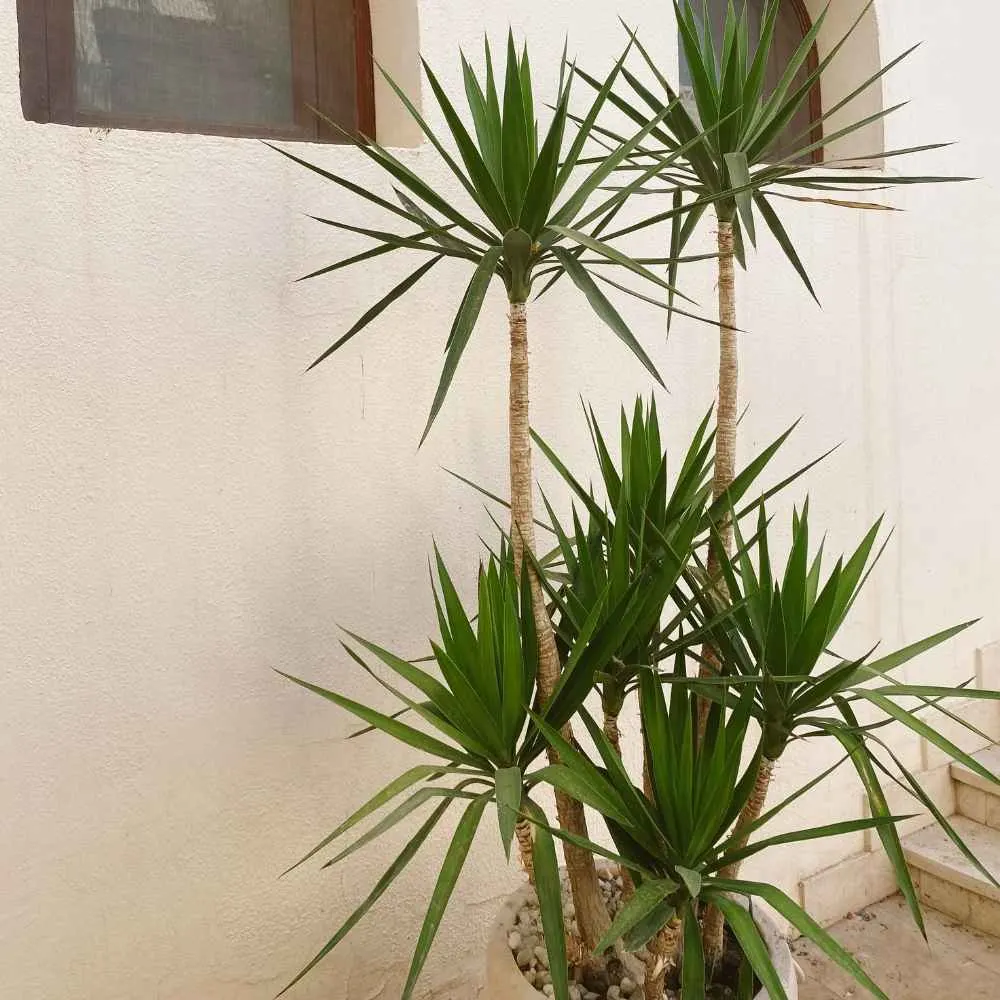
Yucca aloifolia is best grown outdoors in gardens with strong indirect bright light and good drainage. Long hours of bright sun can cause white areas (burn marks) on leaves.
The leaves on alifolia (otherwise known as the Spanish bayonet) are very sharp and unfriendly. Brushing up against the edges and points of the tufted pointy foliage is painful. This is why it is not recommended as an indoor plant. Keep it out of high traffic areas.
Care Tips For Growing Yucca Plants Outdoors:
| Familiar Names: | Spanish bayonet, yucca cane, dagger plant, yucca plant, |
| Scientific Name: | Yucca aloifolia |
| Plant Family: | Asparagus |
| Care Difficulty: | Easy, |
| Temperature: | Grows well outdoors in semi arid climate zones 8 through 11. |
| Watering: | drought resistant, water sparingly once established |
| Soil: | well drained soil with a high inorganic content. For containers use cactus or succulent soil mixes. |
| Flowers: | White Showy Flowers clusters grow out of the top of the cane. you will see them emerge from the leaf tuft. Flowers grow into edible fruit for birds and people. |
| Lighting: | Yucca grows best in bright indirect light. |
| Growth: | yucca aloifolia grows to 20 feet high. Stem diameter reaches 3 to 5 inches. |
| Propagation: | Offsets (or pups) grow from the base of the cane. These can be cut off with some of the cane roots attached, allowed to dry to heal the wound and planted in pots to grow new yucca canes. Yuccas can also grow from division of the rhizome or seed. |
Yucca Flowers:
Yucca plants are most likely to flower outdoors when planted in favorable conditions. The flowers come on in spring and summer. They are beautiful clusters of soft white against the strongly shaped, rigid green leaves. Birds eat the seeds and fruit of these plants. Humans can also eat the yucca fruit either cooked or raw.
The Flowers make Yucca plants popular ornamentals in arid climates.
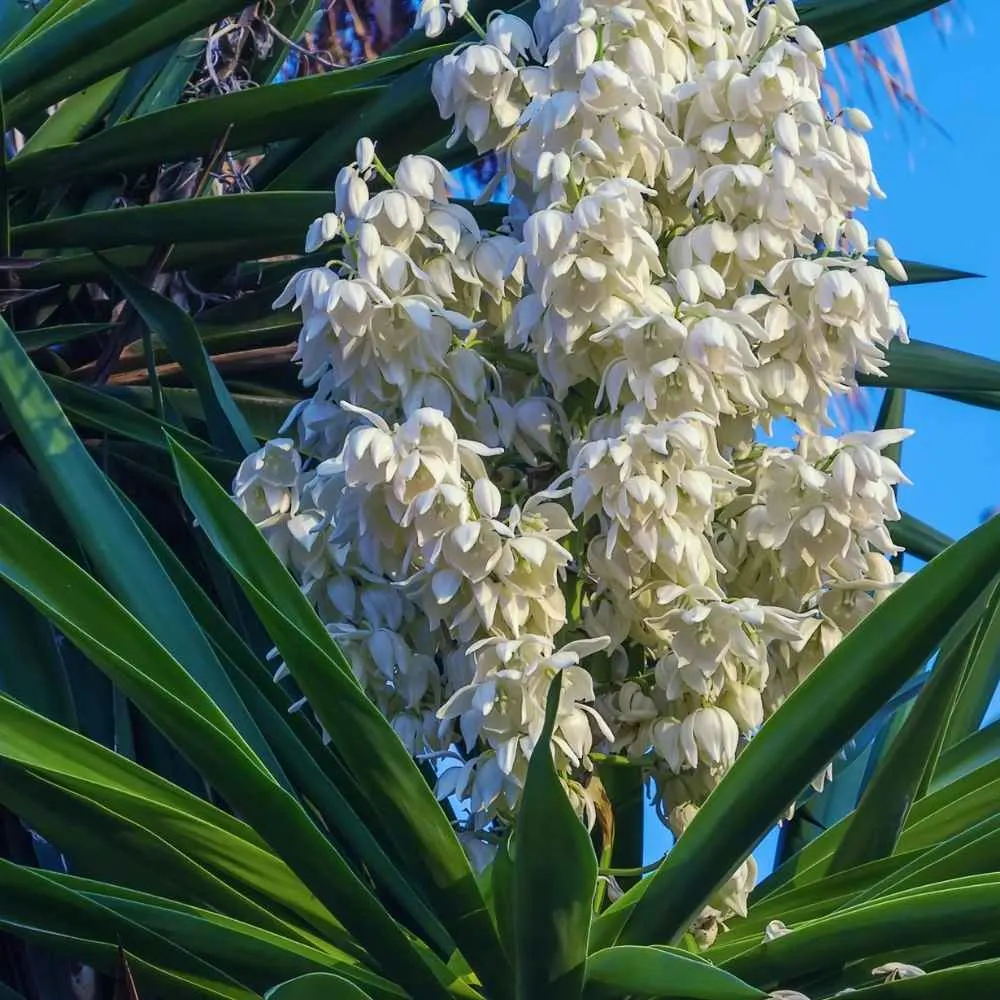
Pruning Yucca Plants:
Prune off the old bottom leaves as they yellow and die. Bottom leaves dying is normal for Yucca plants. Pruning them off keeps your yucca looking fresh as it grows. If you yucca is growing outdoors you may leave the leaves on to form a sort of skirt under the green live leaves.
After the Yucca is done flowering you can cut off the flower stem or leave it if you want to grow fruits and seeds.
If your Yucca cane is getting too tall you can cut the top off. The cane will grow new leaves if there are any growth points it can use. Otherwise your cane will die. You will have to wait until a new cane grows up from the roots.
Cutting yucca canes into sections and growing them as logs can also work. Yucca plants are often sold in this form. See how the tufts of leaves (pictured below) are growing as side shoots at the stem top? New leaves emerged from top and side growth points.
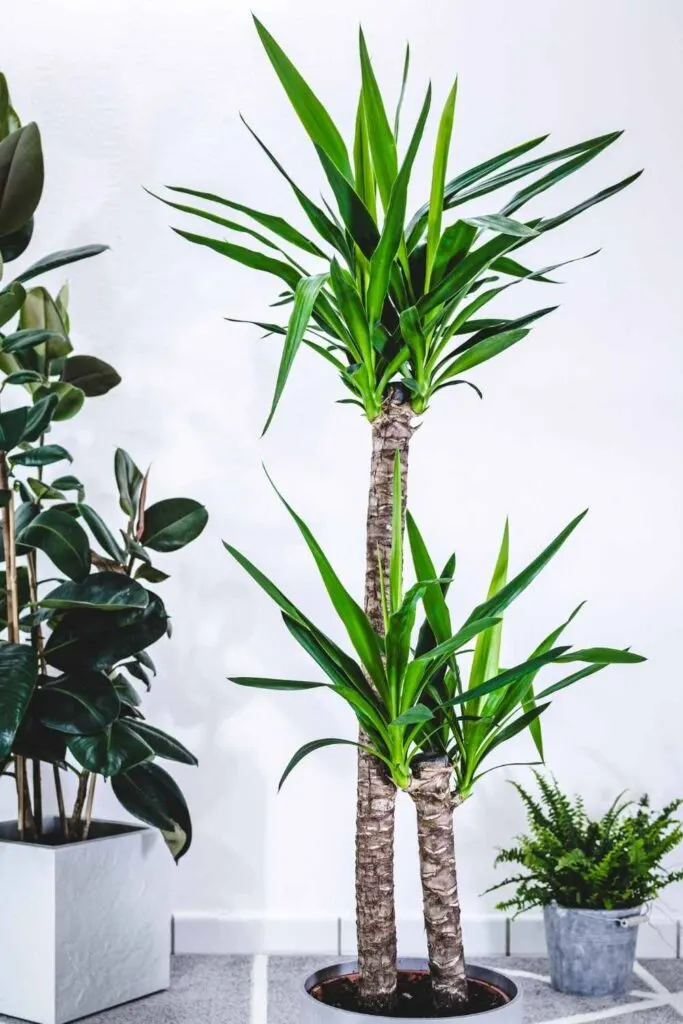
Sourcing Yucca Plants:
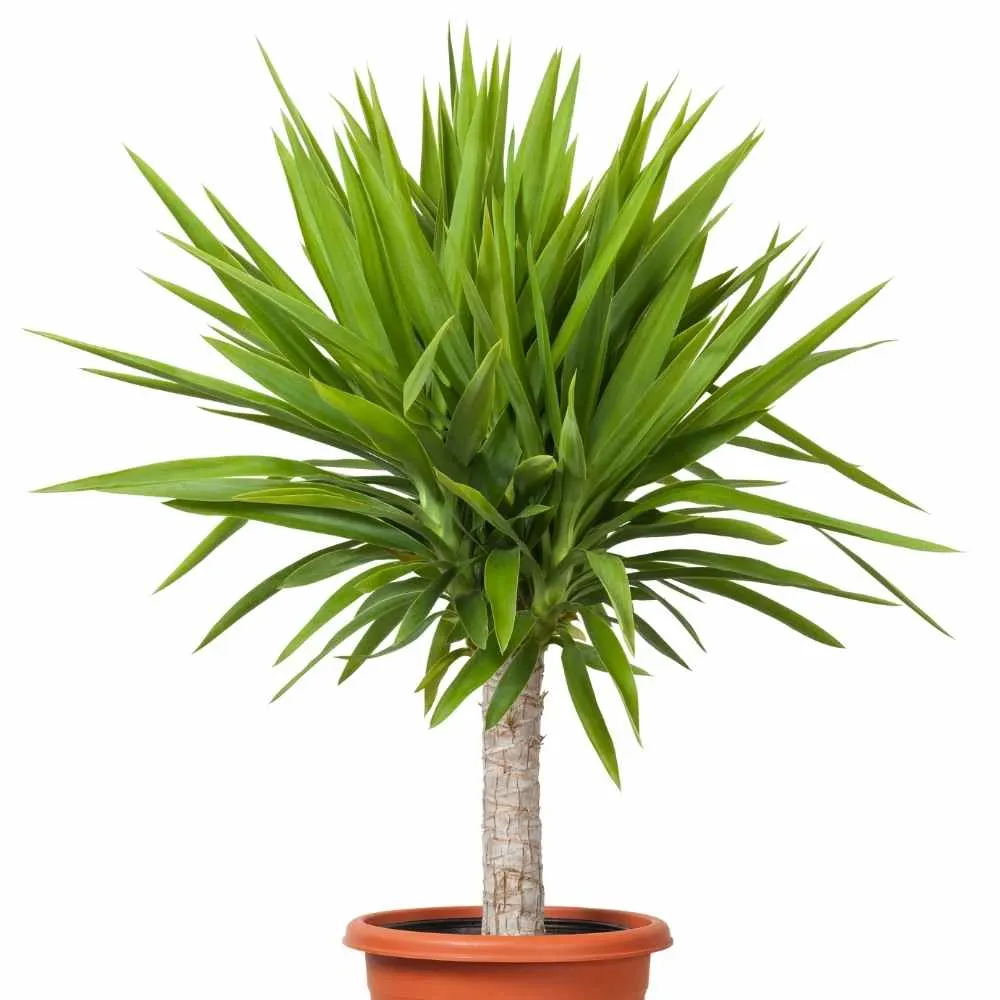
You will find Yucca cane plants available in large garden stores, like Home Depot and Lowes, and occasionally in small local garden shops as well. More often if you live in a warm climate zone. Look for healthy specimens best suited to your purpose.
The Yucca elephantipes plant is readily available in small sizes up to 36 inches high. I found shops on Etsy that sell this plant with three stems and tops already started. That would produce a large and lovey yucca plant with a very characteristic look you may love.
Yucca Plant Care Guide
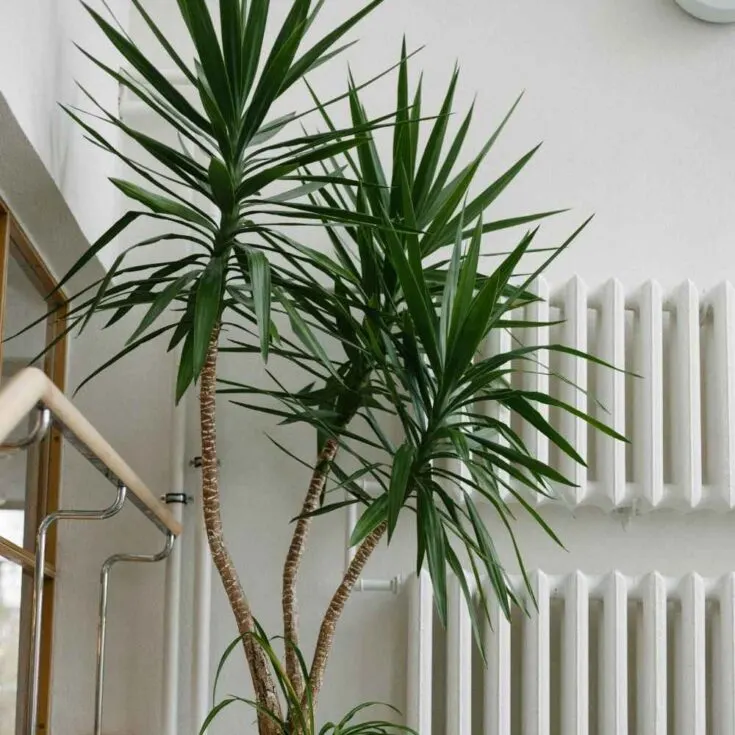
Yucca canes are a very easy succulent to grow and care for indoors. They require very little as a green living housemate and offer benefits to your home.
Materials
- plant pot
- succulent soil
- fertilizer
Tools
- hand pruners
Instructions
Soil:
- Plant the yucca cane into a good succulent or cactus soil. You can make your own succulent soil mix with 40% potting soil and 60% additives to help lighten and drain the soil. Good additons to potting soil for this succulent include, perlite, crushed volcanic rock, and Leca clay balls. Mix it all together.
- Read more on the best soils for succulents in this post.
Watering:
- The Yucca cane is a succulent. It is a native of hot, arid desert regions of central and south America. This plant must not live in soggy soil or it will get root rot.
- Water when the soil is dry down to the roots of the plant or your moisture meter reads dry. Test the soil weekly.
- Read our post on watering succulents for more on this important topic.
Pots:
- Succulent pots must have good drainage and wick water away from their dry loving roots. Terra cotta or other breathable material make great pots for the yucca cane. But the pot MUST have at least one good drain hole in the bottom.
- Read more on succulent pots in this post:
Lighting:
- Yucca plants do best in strong direct light at least 6 hours a day. Indoors they will survive in lower lit areas. They will grow slow and rather spindly in low light.
Humidity:
- Yucca canes will do best in moderate to low humidity. If the leaf tips start to go brown this indicates the yucca plant would appreciate some humidity.
- You can add a humidifier near your yucca plant or set a pebble tray under or near the yucca pot to evaporate up into the leaves.
- There is No need to mist the Yucca leaves but monthly hand washings of the leaves with a neem oil and water wash will shine up the leaves, hydrate the plant and provide a deterent to pests.
Temperature:
- This species of yucca cane grows well in home temperatures of 65 to 85 degrees F. Yucca elephantipes will tolerate cold down to freezing and doesn't mind some failry drastic temperature fluctations.
- But if using as a patio plant transition the container to the indoors when the outdoor temperatures drop to 55 degrees F.
Fertilizing:
- The yucca plant appreciates fertilizing twice a year with a general purpose fertilizer.
Flowering:
- Yucca plants do bloom after they grow to about five years old.
- To encourage flowering: Fertilize the yucca plant in early spring to encourage blooms. Make sure it has a high phosphorus number. Or try adding bone meal to the soil. Also set it outside in bright light to trigger blooming. And keep the watering strictly under control. Healthy roots are vital to flowering.
Pruning:
- Prune off old dead Yucca leaves close to the stem to keep the plant looking fresh indoors. If only the leaf tips are brown and crispy use your pruners to trim the dead tips off.
- Cut off side shoots when they are small as desired to shape the yucca plant and prevent it from adding more stems than you want it to grow.
- After flowering prune off the dead flower stalks unless you are growing yucca fruits.
- Use Larger pruners to remove mature stems. Large stems can be chopped in half or smaller sections and propagated. (see below).
Pests:
- Indoor Yucca plants are susceptible to scale, and mealy bugs and can be infested with spider mites. Read our posts on 7 common houseplant pests for more on this topic.
- When growing yucca canes outdoors or on a patio watch for Yucca moth borers, agave plant bugs(they leave small brown scars on the leaves) and yucca weevils.
Propagation:
- Yucca Canes grow offsets (or pups) from the base of the canes. These can be separated and repotted to grow a new cane. Take some of the roots from the mature cane if you can to improve chances of success.
- At repotting you can divide the canes at the rhizomes and plant them in separate pots as desired.
- Canes can be cut off and cut into log sections. Each log can be rooted into moist soil until roots sprout and leaves grow.
- Yucca can be grown from seed. Follow package instructions. This is a long way to go but you can do it.
Notes
Ther are about 40 varieties of Yucca plant. Make sure you choose the variety best suited to your purpose. As we noted with the two we featured, they all have different charaterisitics that may impact your choice.
Related Content :
Need more information on how to grow succulents successfully? These posts will help!
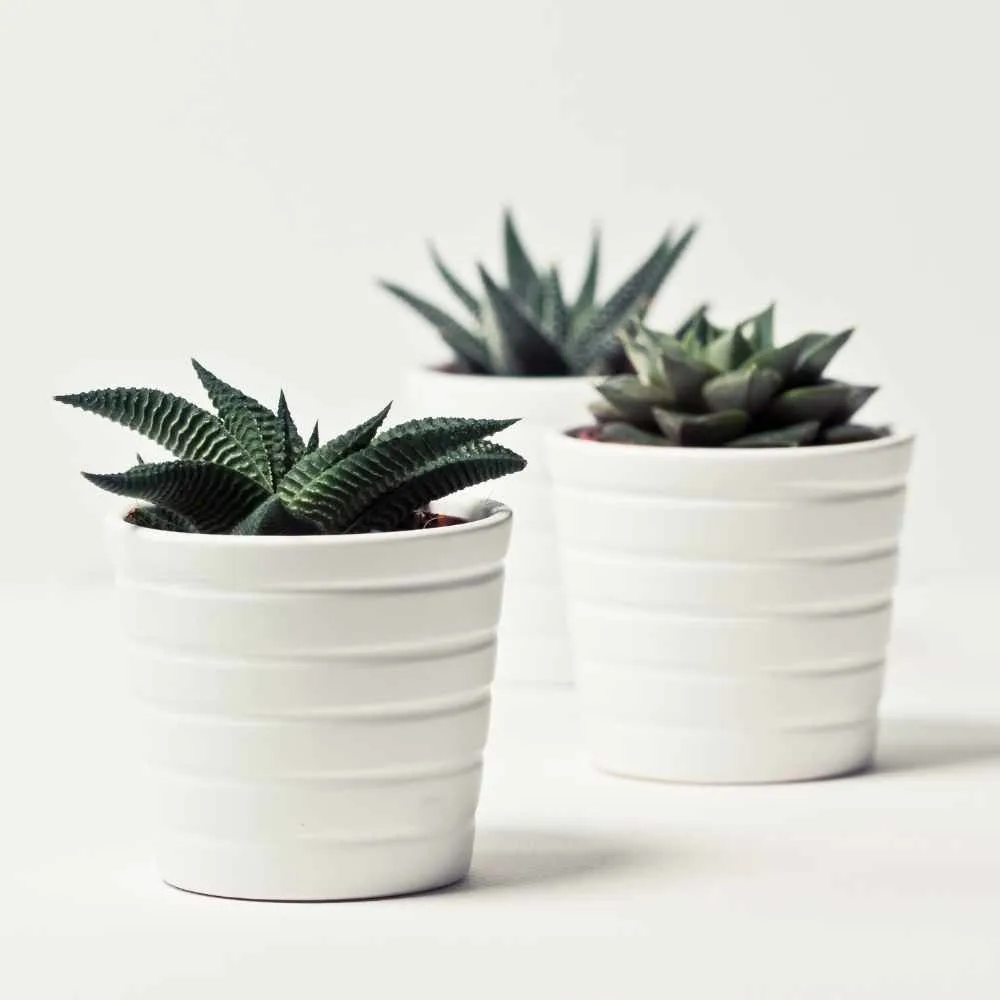
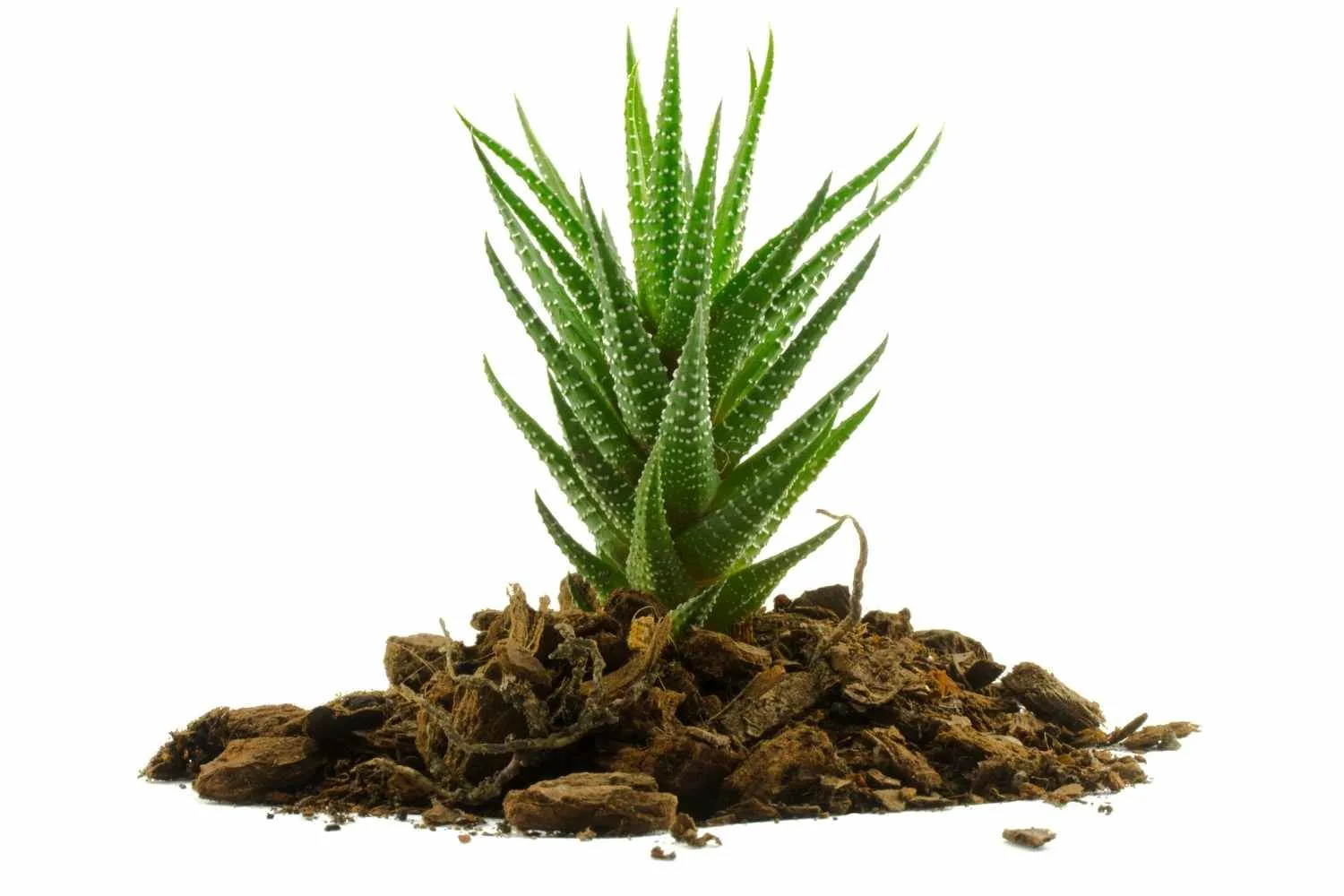
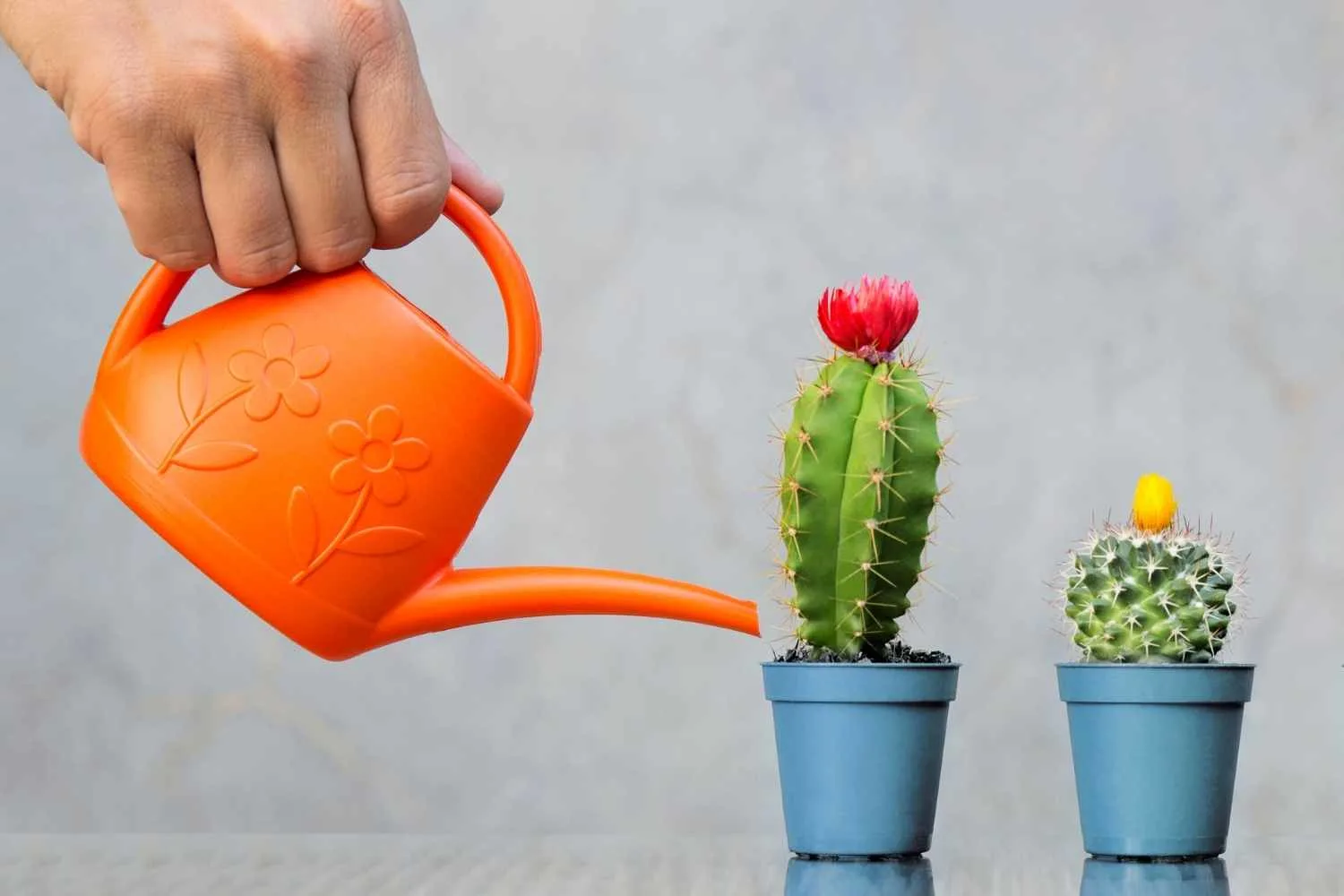
Follow Us:
Find us on YouTube, Instagram , Pinterest and TikTok! We love to Plant chat. We also comment, like and occasionally share your content to our daily stories. We’d love to see your plants. Share your joy in your houseplants. Happy Planting!
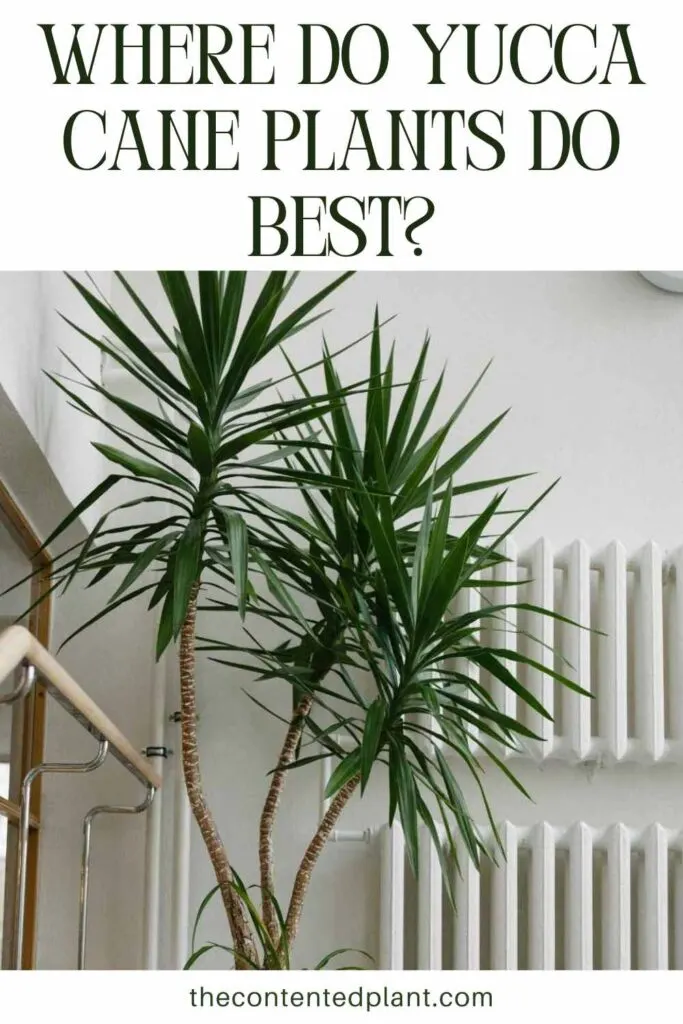


Lipstick Plant - The Contented Plant
Friday 7th of April 2023
[…] Yucca Cane Plant Profile and Care Guide […]
Cat Palm - The Contented Plant
Wednesday 28th of December 2022
[…] Majesty palm Yucca Cane Tree […]